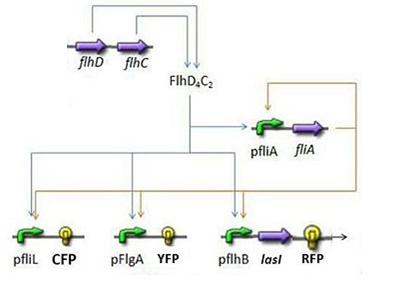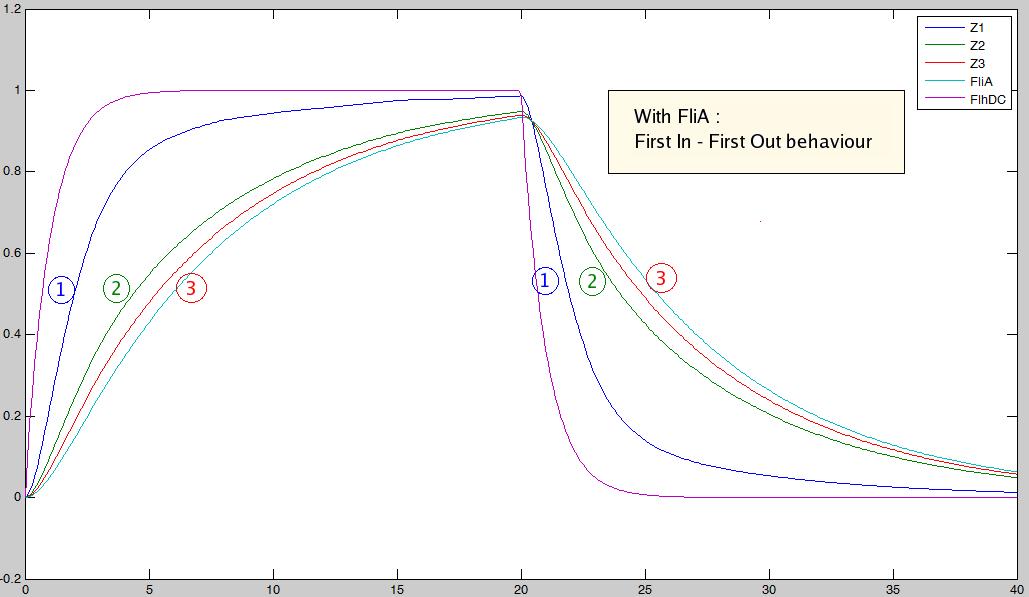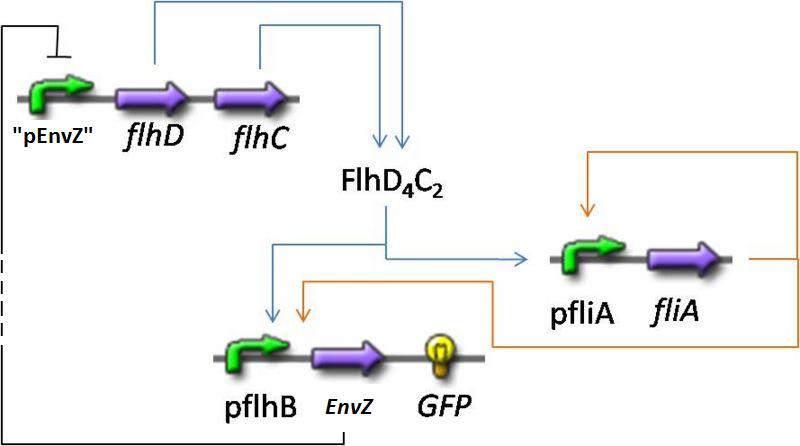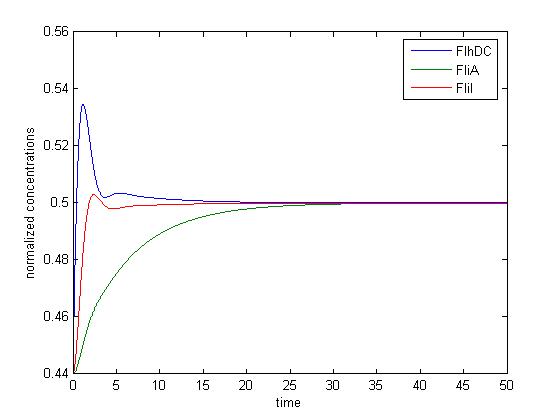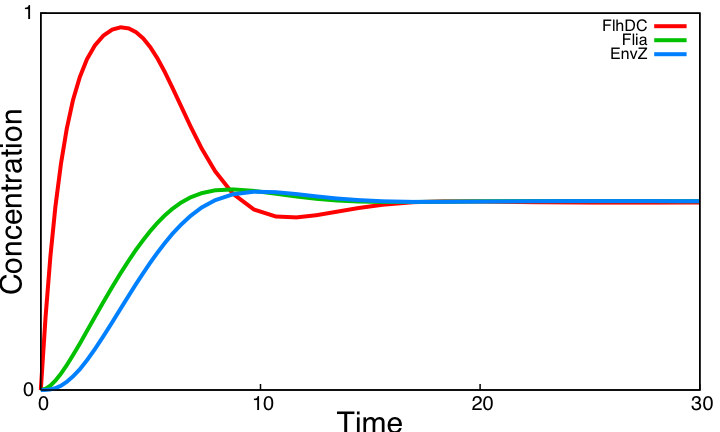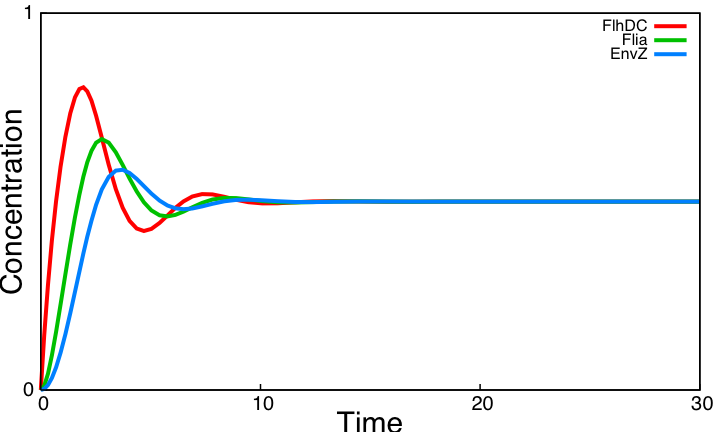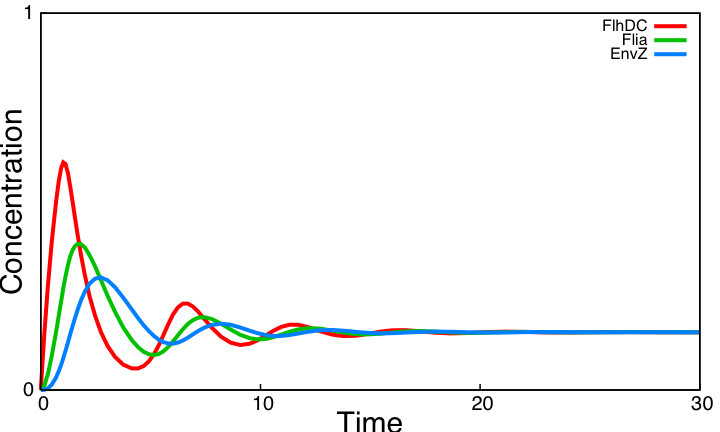Team:Paris/Analysis
From 2008.igem.org
(→FIFO behaviour) |
|||
| Line 13: | Line 13: | ||
= FIFO behaviour = | = FIFO behaviour = | ||
| - | We have designed a model corresponding to the genetic network and we have obtained the following results : | + | <font color=blue>Plus factuel. Ce n'est pas intéressant de dire... nous avons dessiné un mod!èle blab bla bla. Dites directement,... voici le modèle qui correspond à ...</font> We have designed a model corresponding to the genetic network and we have obtained the following results : |
| + | |||
| + | <font color=blue> The FIFO circuit is made of a main regulator (FlhDC) that activates an intermediary regulator (FliA) and the three output genes Z1, Z2, and Z3 that are activated by the combined effect of the two regulators.</font> | ||
<br> | <br> | ||
[[Image:Subsystem1.jpg|400px|left]][[Image:essai_with_fliAbis.jpg|500px|center]] | [[Image:Subsystem1.jpg|400px|left]][[Image:essai_with_fliAbis.jpg|500px|center]] | ||
Revision as of 23:08, 28 October 2008
|
Network Analysis
After having designed the specific genetic networks corresponding to the different parts of our project, we have analysed them through modeling. Therefore, you will find in this page the principal results coming from the models, as well as some resulting simulations. Améliorer l'a rédaction, suggestion: This page presents the principal results of the analysis and simulation of the theoretical models of the FIFO and the oscillator circuit of our project..
FIFO behaviourPlus factuel. Ce n'est pas intéressant de dire... nous avons dessiné un mod!èle blab bla bla. Dites directement,... voici le modèle qui correspond à ... We have designed a model corresponding to the genetic network and we have obtained the following results : The FIFO circuit is made of a main regulator (FlhDC) that activates an intermediary regulator (FliA) and the three output genes Z1, Z2, and Z3 that are activated by the combined effect of the two regulators.
To go further into : OscillationsThen, we have simulated the FIFO with a negative feedback, in order to observe oscillations. We have obtained the following results :
Want to know more about : System ImprovementsBasically, we had to explore other possibilities to obtain oscillations. After just trying to tune the parameters, we have decided to add a supplementary delay in the system, in order to allow oscillations to appear. Thus we have decided to use Quorum sensing mechanisms that will bring both this needed delay and a synchronization among the population. -*-*-*-*-*-*-*-*-> Ici une figure pour illustrer les oscillations du système complet <-*-*-*-*-*-*-*-* All the details can be found here :
|
 "
"

